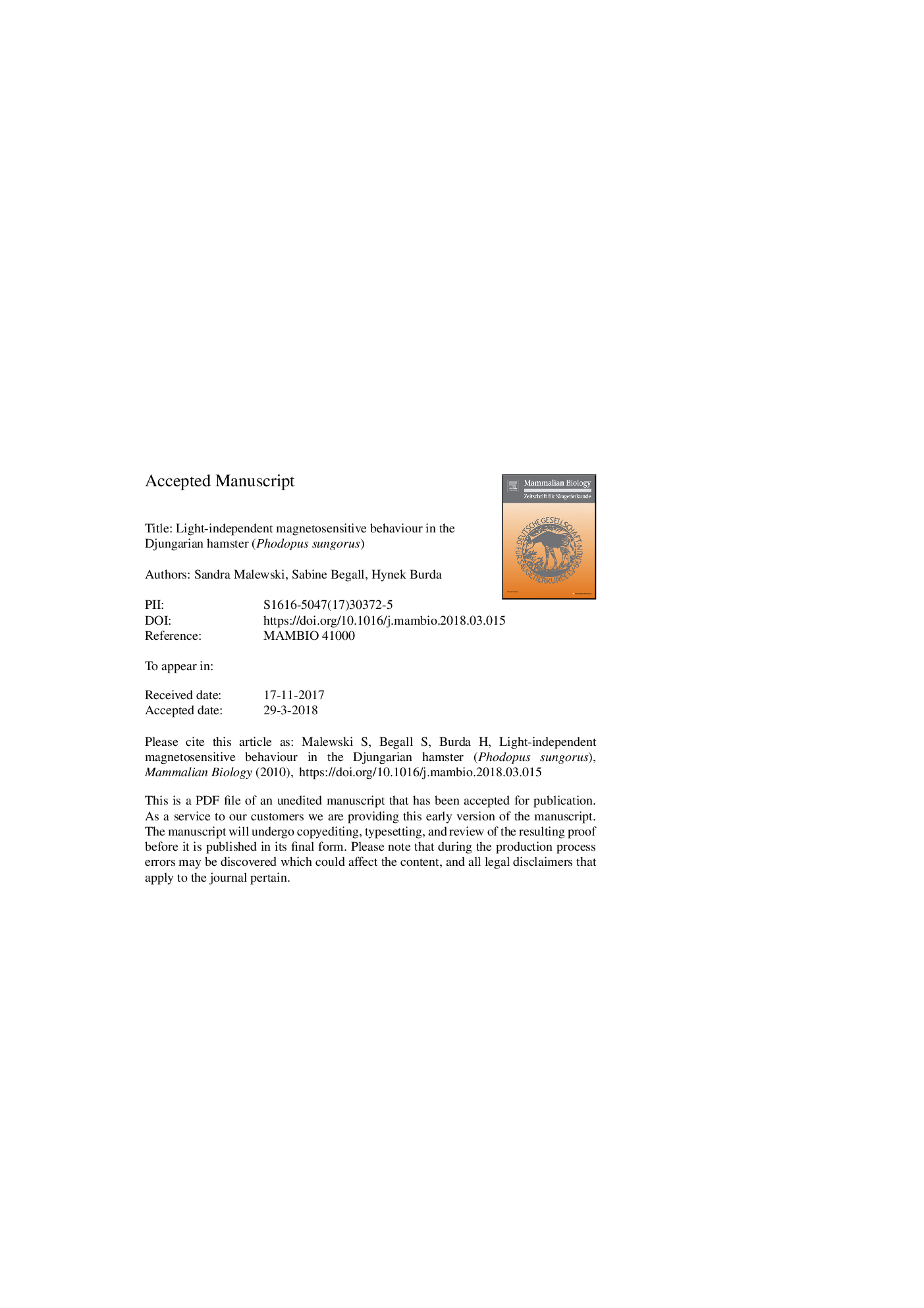| Article ID | Journal | Published Year | Pages | File Type |
|---|---|---|---|---|
| 8475615 | Mammalian Biology - Zeitschrift für Säugetierkunde | 2018 | 11 Pages |
Abstract
Although magnetoreception is known to be widespread in the animal kingdom, the underlying perception mechanism is still poorly understood, thus representing one of the most relevant research gaps. Currently, a light-independent magnetic-particle mediated mechanism and a light-dependent radical pair mechanism are the two mainly discussed hypotheses for terrestrial animals. Hamsters are highly interesting mammalian models for studies on this topic, because, based on their ecology, both mechanisms seem equally possible. The Djungarian hamster (Phodopus sungorus) expresses a learned magnetic orientation pattern. Here, we tested Djungarian hamsters in the well-established nest-building assay under different magnetic field conditions in darkness. We provide behavioural evidence that Djungarian hamsters exhibit light-independent learned magnetic compass orientation in the nest-building assay and discuss implications concerning the underlying mechanism.
Keywords
Related Topics
Life Sciences
Agricultural and Biological Sciences
Animal Science and Zoology
Authors
Sandra Malewski, Sabine Begall, Hynek Burda,
